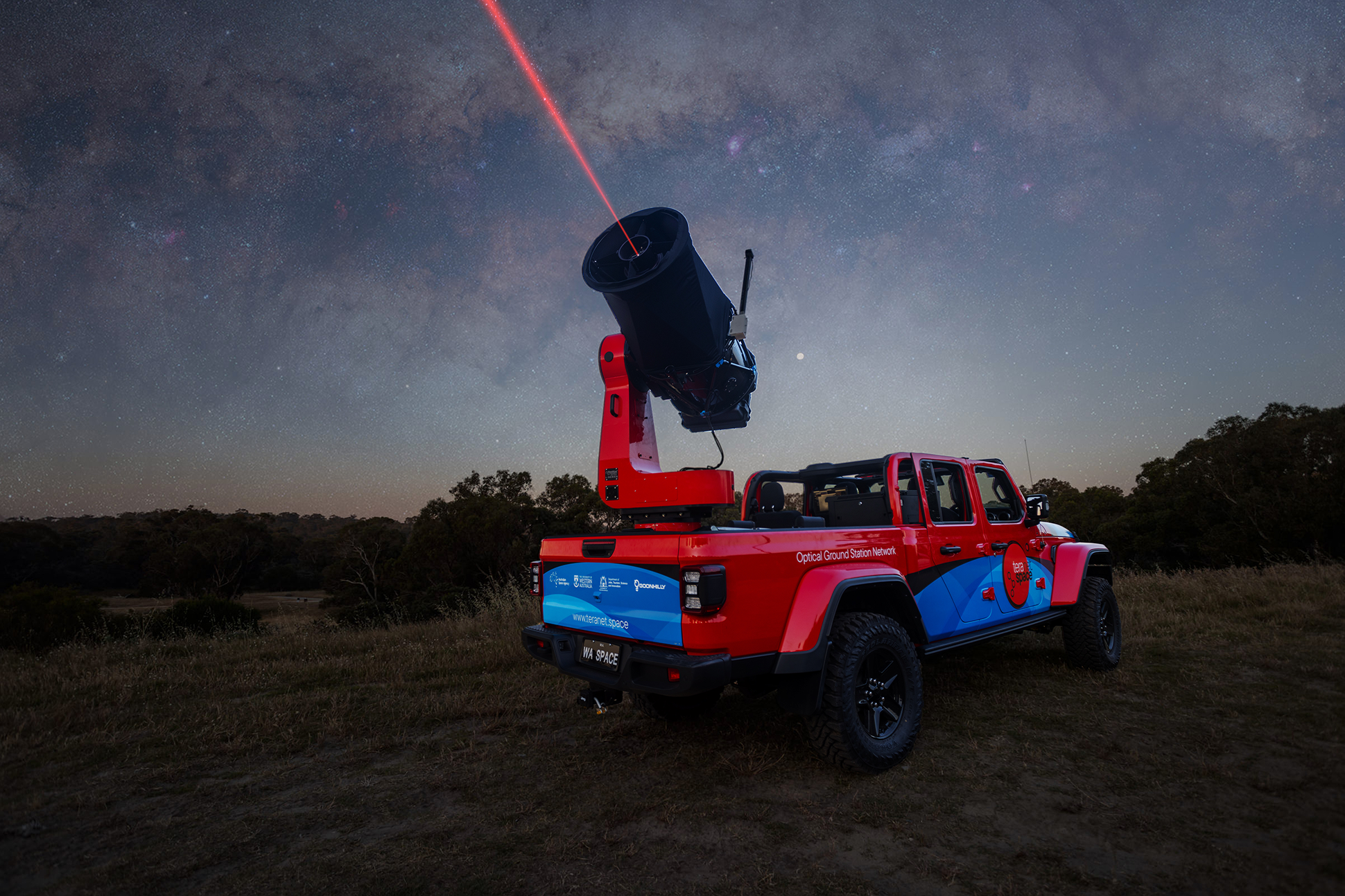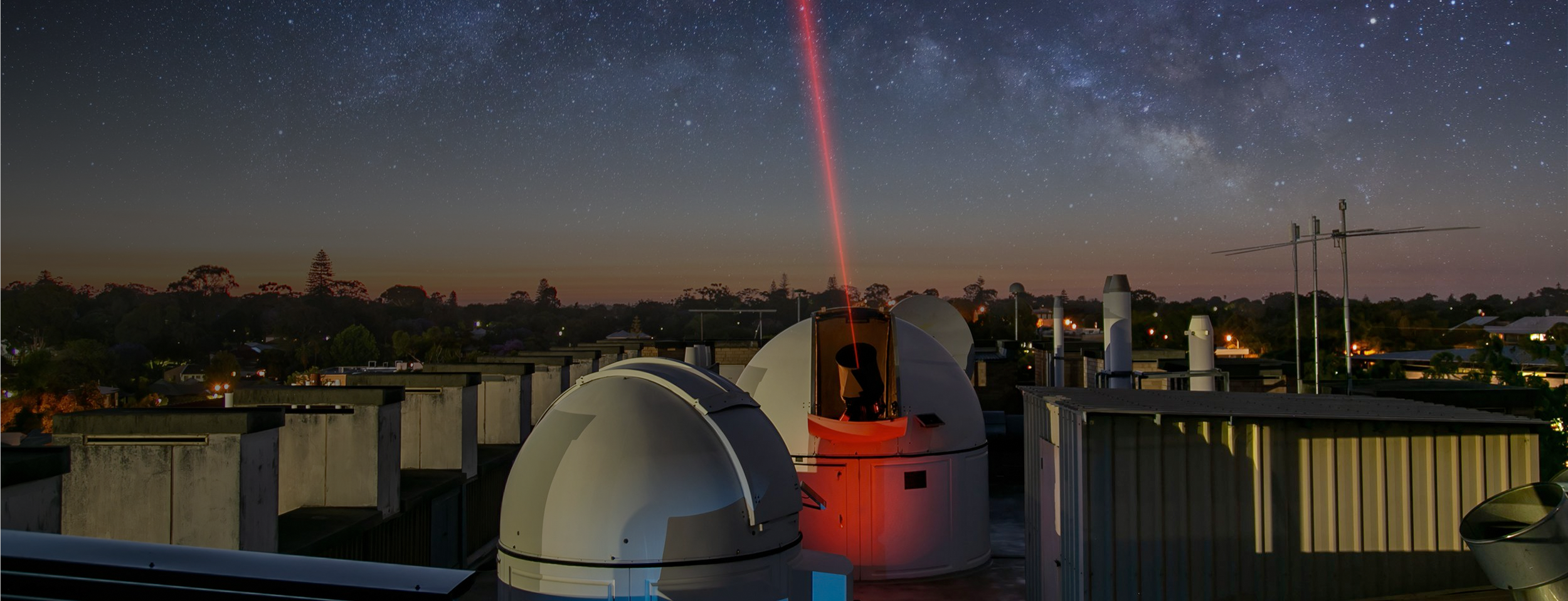
Transforming Space Communication with Optical Innovation.
Harnessing the power of photons to revolutionise free-space optical communications, timing, and quantum technologies, driving innovation in astronomy and space science.
What is TeraNet?
At TeraNet, we harness the power of photons to revolutionise free-space optical communications, timing, and quantum technologies.
Our work spans applications application's in high speed communication, high precision timing and collaboration on a global scale.
Projects at the Forefront of Optical Communication
Explore how TeraNet is revolutionising space communication with cutting-edge projects that bridge the gap between Earth and the cosmos.
Optical Ground Stations
Establishing a network of ground stations in Western Australia to support space missions with advanced optical communication technologies.
Fundamental Communications
Equipping TeraNet nodes with versatile, spacecraft-agnostic systems for seamless bidirectional communication with low Earth orbit spacecraft.
Advanced Communications
Leveraging new technologies to enable cutting-edge research towards deep-space communications, coherent communications and timing, and quantum communications.
Bring Space Communication to Your Classroom
TeraNet invites schools to participate in an exciting journey into the world of space communication and cutting-edge optical technologies. Through interactive sessions and hands-on experiences, we aim to ignite curiosity and inspire the scientists, engineers, and innovators of tomorrow.

“Western Australia’s geography and climate means it’s one of the best places in the world to host these ground stations.”
— Professor Sascha Schediwy
Stay Connected with TeraNet
Catch a glimpse of our latest updates, events, and breakthroughs in optical communication.











